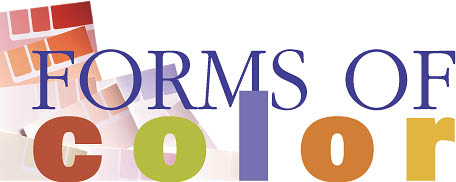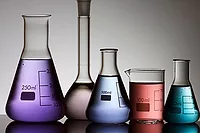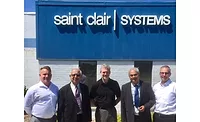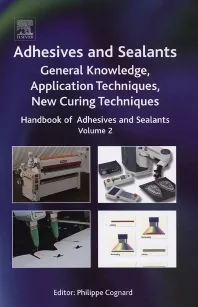Forms of Color

Color plays an important role in our everyday lives. We use color to effect the way we react, feel and look. We use color in very functional ways to convey warnings such as for traffic signals and road signs. We also choose specific colors and pigment types for their high degree of visibility; for example, red for fire engines and emergency vehicles, yellow for taxi cabs, and a multitude of distinct colors to define police cars throughout the United States.
Color influences our moods and effects the way we feel. Color is used in our home and workplace to convey feelings of relaxation: yellow, orange and red colors being interpreted as warmth, or green and blue colors to create the feeling of coolness. We also use color for personal choice in the clothes we wear, household items we buy and cars we drive. At the present time, manufacturers are increasingly using color to make their goods more attractive and consumers are being presented with an ever-increasing range of colors and shades from which to choose.
As the use of color has increased, so have the developments by pigment manufacturers. Today’s technicians have a tremendous range of pigments to choose from. End-use application requirements, such as temperature resistance, durability, color and weatherability, will normally determine the choice between inorganic and organic pigments and may limit the choice of chemical type within these two classes. A range of pigment grades is also available within each chemical class of pigment. Properties such as dispersibility, flocculation resistance, rheology, transparency, opacity and durability can be influenced through the use of surface treatments, chemical modification and control of the pigment’s crystal size.
The pigment used to color a paint, ink or a plastic item represents a major raw material cost component of that product, and correct choice is essential to ensure that required product performance, customer satisfaction, and profit margins are achieved. Another important criteria is the physical form in which the pigment is supplied to the consuming market. This area all too frequently receives insufficient consideration yet it is a property of the pigment that has a dramatic effect on the efficiency and profitability of a coatings producer or ink maker.

Pigment Dispersion
Since this article discusses the merits of dry pigments and dispersions, it is worth starting with some definitions of these terms to avoid confusion.Pigment
The definition of a pigment proposed by the Colored Pigment Manufacturers Association (CPMA) is: “Pigments are colored, black, white or fluorescent particulate organic and inorganic solids which usually are insoluble in, and essentially physically and chemically unaffected by, the vehicle or substrate in which they are incorporated. They alter appearance by selective absorption and/or by scattering light. Pigments are usually dispersed in vehicles or substrates for application, as for instance in inks, paints, plastics or other polymeric materials. Pigments retain a crystal or particulate structure throughout the coloration process.”Dispersion
The manufacturing of colored organic pigments involves wet state chemical processing. After washing to remove undesirable soluble matter, the resultant presscake is dried, pulverized and normally blended to produce a dry powdered pigment. The drying and pulverization processes can cause aggregation or agglomeration of the pigment particles. However, optimum performance is best achieved when the primary particle size of the pigment is maintained. The paint and ink maker, therefore, has first to “wet” and then to break down the agglomerated and aggregated particles and stabilize the resultant dispersion using high energy dispersing equipment in combination with a resin/dispersing agent as appropriate.Selecting Dry Powder or Pre-dispersed Pigment
Like most things in life, there is no simple answer — it depends on the individual circumstances. However, full consideration must be given to all aspects of the choice in order to make the right decision for each particular business. The decision to use dry or pre-dispersed pigment should not be made on price considerations alone. A number of other factors must be taken into account. Powerful, convincing arguments exist that support the need for both forms in the market place.Dry Pigment
Pigment supplied in the form of dry powder or granules represents the traditional form of supply to the ink and coatings producers, and may still be the right choice for many situations. Dry powder pigment provides the widest possible choice of grades available to the formulator. Dry powder allows the formulator a high degree of flexibility, but careful consideration is needed to ensure maximum product performance and that benefits are not being lost through the wrong choice of the pigment’s physical form.Many coatings technologies use a combination of resins. A resin with good pigment wetting properties is used during the dispersion stage while the main film forming resin is added at the let down stage. Due to the nature of the dispersing resins used, too high a content in the final coating formulation can be detrimental, and adversely affect durability, film cure, and inter-coat adhesion. The use of specialized dispersions such as Predisol® pre-dispersed pigment or flush color, each of which achieves high pigment to binder ratios, often allows the formulator to optimize the formulation by reducing the amount of dispersing resin in the final formulation.
Certain classes of pigment are extremely difficult to disperse to full potential. Transparent iron oxides are good examples where, due to their very small crystal size, ease of aggregation and acicular shape, special equipment and techniques are required to achieve the desired cleanliness of shade, strength, and transparency. Tetra-chlor copper phthalocyanine blues are another example where it is difficult to achieve the red/green flop in waterborne systems by conventional dispersion methods. In such cases specialist “Dispersion Houses” that produce customized dispersions are very often viewed as the best economic choice.
Dust problems are probably the biggest complaint that arises from handling dry powdered pigments. The physical form of such dry pigments readily allows fine particles to be carried on air currents when handled. This results in housekeeping and industrial hygiene problems in the plant and operative health risks unless costly extraction equipment is installed. The increase in emphasis on manufacturers providing safe working conditions brought about by the introduction of legislation throughout the United States has brought the hazards of such “nuisance dusts” sharply into the limelight.
Pigment Dispersions
The use of pigment dispersions by both ink and paint manufacturers has grown at a rapid rate over the last few years for many reasons.There are a number of specialist dispersion manufacturers supplying the ink and coatings market in the United States. A range of products and product types are available to meet each market need. These toll manufacturing operations are able to cater to both water- and solventborne technologies. For waterborne products, dispersions are offered with several options to include surfactant stabilized or resin/glycol products. Standard product lines are also available based on industry recognized pigment and resin grades. Alternatively, by way of toll manufacturing or co-operation agreements, customer specified dispersions can be produced based on either commercially available or customer unique materials. Forms of dispersions available can be broadly classified as shown in the figure.
Following are the main attributes of each dispersed form that should be considered.
1. All purchased dispersions have been produced to a quality that is controlled against agreed or commercially established specifications. This saves time and expense for the paint and ink maker.
2. By definition, pigment dispersions are already dispersed and will require relatively simple incorporation into the finished product. Considerable cost savings can be realized through the strategic use of dispersions by reducing labor costs, minimizing capital expenditure on production equipment, reducing inventory costs, easing capacity constraints, reducing yield losses and streamlining production processes.
3. There is evidence to support the view that pigment dispersions from specialist producers often offer quality benefits over “in-house” dispersions. This is especially true for difficult to disperse pigments and for high cost pigments where additional strength improvements give substantial benefits.
4. Higher levels of dispersion also lead to improvements in transparency and cleanliness of shade giving the color formulator much more flexibility and versatility, an important consideration as manufacturers continue to reduce costs by limiting the number of pigment grades they use.
The suggestion that dispersion specialists produce better quality products in a number of cases is a view that some paint or ink producers may find hard to accept but it’s quite feasible. A good dispersion manufacturer will have developed proprietary knowledge and expertise of dispersion techniques and will usually have available a range of specialist equipment and personnel not normally found in a paint or ink factory.
Paste/Liquid Dispersions
As the name implies, these are dispersions of pigments that contain solvent/diluent either organic in nature or waterborne. These dispersions can be free flowing pourable liquids or high-viscosity pastes depending on the composition. Depending on the specified end use, they may contain resins, additives or surfactants. Due to their fully dispersed nature, this family of dispersions is readily incorporated by means of simple low energy mixing equipment requiring no additional dispersion.Stability or shelf life can be a limitation with some reactive systems — a problem already faced by the paint producer as in-factory mixing schemes become increasingly popular. In-plant handling difficulties limit the pigment content of resin containing dispersions due to high rheology levels especially with small particle size, high oil absorption pigments. This is largely overcome with flushed colors as used for offset ink production by using the product directly from an oven or “hot box” to minimize viscosity. This is not always a practical proposition for all manufacturers however. High pigment loading is achieved with waterborne, surfactant stabilized dispersions but water sensitivity due to the retained surfactant in the dry film may limit their end application.
Conventional Dispersion
Comparatively low cost, low- to medium-quality dispersions are available through conventional dispersion in the widest possible range of resins. It is traditionally produced by bead-mill dispersion, and is used in all industry sectors.Flushed Color Dispersions
Flushed color, or pigment flushes as they are known, is a unique form of pigment paste dispersion. Flushed color is a medium-cost, high-performance product most commonly used by offset ink makers to produce inks for heatset, coldset and sheet-fed applications. Use of flushed color has been shown to produce major benefits in quality and reduction in process times in comparison to traditional dry powder use. Flush is now also used in the coatings marketplace again for it’s high quality and ease of use.So what is flush? It is a physical form resulting from the transfer of a pigment in the water phase to a pigment in an oil phase without drying, grinding or pulverizing the pigment. The flushing process is not new; the earliest patent was granted in 1869. The flushing process, mixing pigment presscake with resin or varnish in a flusher was pioneered by R. Hochstetter in 1914 and is still used today. A flusher is a very powerful temperature-controlled sigma blade mixer capable of being placed under vacuum. The flusher incorporates two heavy “Z” blades that rotate at different speeds in differing directions. The blades have a small gap between them that is designed to generate high levels of shear force and to maximize pigment dispersion.
Flushing is an elegant, seemingly simple process involving first loading pigment presscake into the flusher then slowly adding resin or varnish to give a high viscosity paste, which is mixed by the “Z” blades until dispersed. A wide range of resin can be successfully flushed; wetting additives or flush aids can be used to improve flushing performance. Under the correct conditions the pigment surface is oleophilic (hydrophobic). Under the high energy action of the flush mixer the water surrounding the pigment particles is preferentially displaced by the resin; this is known as a “break.” The water separates out into a clear layer and the excess is poured off taking with it any undesirable soluble salts present. Typically three or four breaks are required to complete the water/resin exchange. The last traces of water are removed by a combination of heat and vacuum after which operation the flush is then standardized for color, strength, solids content and rheology.
As previously mentioned, dry powder pigments are produced from wet presscake. The presscake is first squeezed in a filter press to remove the majority of the water before being fully dried by applying heat, and then mechanically pulverized to produce a fine powder. All these actions produce agglomeration of pigment particles that, for optimum pigment performance in the final product, must be broken down as close as possible to primary particles by the paint or ink maker using high-energy dispersion equipment. Another problem that can occur in the drying stage of some classes of powder pigment is heat damage. For example, the diarylide yellows become lighter, more opaque and weaker with increased exposure to heat. The flushing process starts from presscake and produces dispersions without any of the agglomeration caused by drying and pulverization. This results in very high quality dispersions with maximum strength, transparency, cleanliness of shade and gloss. A wide range of pigments is available in flushed form. Typical pigment levels for ink flushes are 40-45% while flushes for coatings use are more typically 25-30% pigment. Flushes are completely dust free and incorporated by simple mixing giving fast economic production.
Solid Dispersions
This category of dispersions includes pre-dispersions of pigment supplied in dry form either as dust free granules or flakes. They do not contain solvents but may contain additives or plasticizers. The two common forms that typify this form are chips and Predisol pigment preparations.As these are in solid form, they do not have the pigment level limitation found with paste or liquid dispersions due to the handling difficulties encountered with high rheology pastes. Pigment levels of between 50% and 70% are achievable, depending on the pigment and resin type. The high pigment-to-binder ratio achievable from some specialist dispersions minimizes the content of dispersing resin, which opens up the possibilities of developing multi use concentrates, a highly desirable production capability.
A benefit with some dry dispersions is that they are suitable for automated in-plant dispensing, a very cost efficient process. Solid supply form also produces very stable product avoiding settlement, drying out problems, or frost damage, problems that can occur with liquid/paste dispersions. Transport is also simplified with dry dispersions both economically by not shipping water or solvent in the dispersion and also by avoiding transport limitation due to flash point restrictions.
Although dispersions for both solvent- and waterborne systems are available, there is some limitation on the type of resin that can be used to produce solid dispersions. Resins in solid form are normally preferable, low glass-transition temperature (Tg) resins and emulsions can be problematic. Solid dispersions are not as easy to incorporate as paste dispersions; still able to be used with mixing equipment, they require high-speed stirring rather than the slow mixing required by paste forms.
Dispersion “Chips”
Dispersion chips are relatively high cost products giving medium to high performance. They are produced by two-roll milling, a labor intensive, low productivity and difficult to control operation, hence the resultant high costs.Two-roll milling is a high shear dispersion process that can produce high-quality dispersions. Chips are suited to products that require a high degree of transparency or where strength benefits can be achieved from high cost pigments as, for example, in the coatings area with transparent iron oxides, perylenes and quinacridones. They are processed in a slurry form, normally from dry pigment (although presscake can be used) and supplied as dry flakes.
Some manufacturers bead mill the chips and supply them in paste form. Typical resin types used are nitrocellulose (NC), cellulose acetate butyrate (CAB) and amine soluble acrylics for water based systems. Dispersed “chips” are used in both the ink and coatings markets where the properties resulting from the chipping process justify the economics. Chips can be a little difficult to re-disperse especially if the usual low level of retained solvent has dried out, as such these physical forms may need pre-soaking for best results.

Predisol Pigment Dispersions
The production process for these unique products, which carry the trade name of Predisol, involves a combination of patent protected operations (see sidebar, below). The increased use of waterborne technology in the coatings industry brought about by the introduction of environmental legislation has presented paint makers with a number of challenges to maintain product performance in the new technologies. One aspect of this is achieving adequate pigment dispersion to obtain the required color travel, shade and transparency levels. Predisol W dispersions provide a unique opportunity to solve the majority of such problems. Partnerships between supplier and user to produce “tailor made” dispersions can allow such preparations to be developed in the customers own resin system thus solving many of the problems arising from traditional methods of dispersion.The major advantage from the Predisol dispersion process is that the pigment is optimally wetted out so that the intrinsic color strength and transparency of the base pigment is fully developed. In practical terms this means that the coloristic results obtainable by simply dispersing the preparation for 15-30 minutes in a high energy mixer are superior to those obtained through a conventional dispersion of the same pigment, even when sophisticated equipment and modern dispersion techniques are employed.
Such commercial dispersions contain only pigment and resin, and are free of the additives and plasticizers often found in chips and other dispersions. This fact alone is of great significance to the formulator since it provides the highest possible formulation flexibility.
Predisol preparations are incorporated into solvent and binder solutions by means of a high-energy mixer. To ensure short dispersion times certain ratios are advised. The diameter of the tank should be 2.5 to 3 times the diameter of the impeller disc; the most efficient peripheral speed for the impeller disc is between 65 and 80 fps.

Conclusion
As businesses become increasingly global, pressures increase to reduce cost and improve manufacturing efficiency. This requires a fundamental review of the way a business operates. Production strategy is a major source for cost reduction and efficiency improvement, an important part of which is the choice of the physical form of the pigment being used to color the coating.As already stated, there is no simple answer: different solutions will best suit different manufacturers. Each business must analyze how it operates and ensure that the procedures and methods employed best meet the business growth and expansion plans.
The correct choice between dry pigment and a pre-dispersed product depends on a number of factors not just supply price per pound as already discussed and as the table, which compares production of a perylene pigmented automotive basecoat from both dry pigment and a Predisol, illustrates.
The use of dry powder pigment requires the manufacturer to fully disperse the pigment using high-energy equipment as opposed to the stir-in option provided by dispersions. Full dispersion equipment requires a considerably higher capital investment in comparison to simple mixing machinery, a key consideration when capacity constraints are an issue and expansion planned. Capital investment will not be as important an issue if capacity is not tight and equipment readily available especially if the equipment is so old as to have been written down on the books.
Batch size is also a key consideration. Dry pigment will often be the best choice for large-batch, frequently made products, but small-batch infrequently made products are a different situation. Such products can have a big effect on cost through yield losses and production inefficiency. Yield losses from a 25-liter bead mill, for example, will vary with batch size but can be as little as 3% and as much as 35%. It is not always possible to pass this cost on to the customer; a better solution may be to buy a stir-in dispersion, which will have much lower yield loss and be faster and easier to produce in-plant for such “low volume” expensive colors.
Production output can be dramatically improved through the use of pre-dispersed product — mixing only is much faster than full dispersion and down time for cleaning is greatly reduced. Use of dispersions enables batches to be completed within a single production shift, thus reducing cost and avoiding the misunderstandings that can occur between shift changes. Production planning is more accurate when pre-quality controlled dispersions are used, less batch-to-batch variation occurs in comparison to traditional dispersion methods.
This article was written with the aim of highlighting the wide range of options available to the paint and ink formulator in terms of pigment selection and has set out to list the key considerations in making that choice. The point has been stressed that there is no single best choice that will suit the diverse paint and coatings manufacturing industries but that the tools are there to meet the industry requirements. c
For more information on pigment selection, contact Sun Chemical Corp., 5020 Spring Grove Ave., Cincinnati, OH 45232-1988; phone 800/632.2323; fax 513/632.1537; visit www.sunpigments.com; e-mail RultenP@sunchem.com.
Looking for a reprint of this article?
From high-res PDFs to custom plaques, order your copy today!








